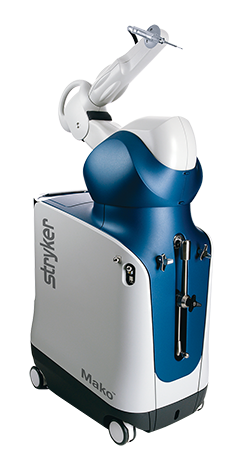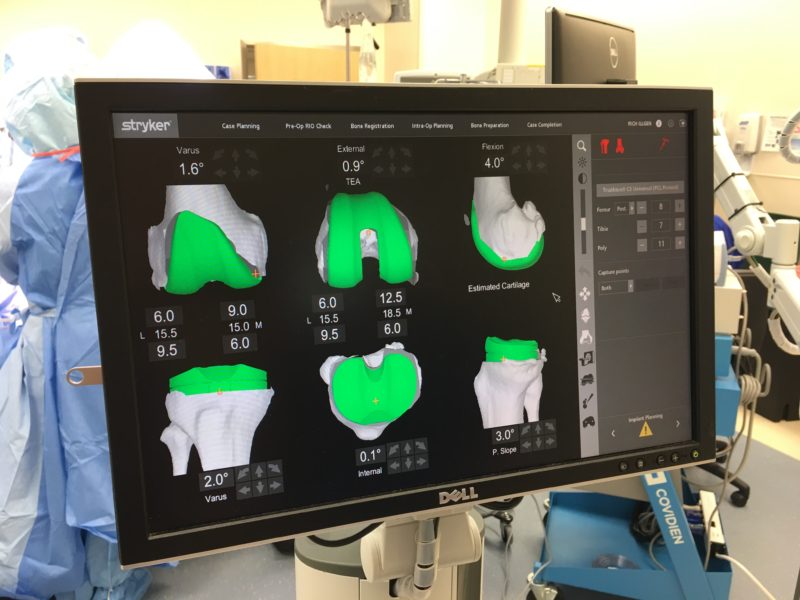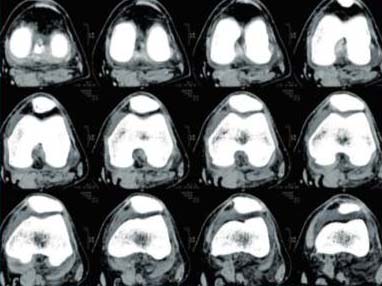When pain, stiffness, and limited range of motion in your knee keep you from your daily activities, you may need a knee replacement. For patients with osteoarthritis, the most common source of debilitating knee pain, the goal of knee replacement is to restore function and decrease pain.
KNEE ANATOMY
The knee is a complicated joint that is essential for daily function. The joint is made from the end of the thigh bone (femur), where it meets the shin bone (tibia), and the kneecap (patella). Normally, the cartilage coating over the bones makes the joint move smoothly and provides an additional shock-absorbent cushion. In an arthritic knee, the cartilage surface wears out and begins rubbing bone on bone which causes joint pain, stiffness, and swelling of the knee joint. In a total knee replacement surgery, the arthritic surfaces of the knee joint are removed and new surfaces are provided with metal and poly (plastic) parts. This relieves knee pain and allows the joint to move smoothly again.
EVALUATION
Your doctor may recommend joint replacement surgery if conservative treatment methods have not relieved your knee pain or allowed you to continue with daily activities. An orthopedic surgeon will give you a thorough evaluation that includes your medical history, a physical exam to test range of motion, ligament, and muscle strength, and to identify the source of the pain. He or she will order imaging tests such as x-ray or MRI to see where the arthritis is and to evaluate the cartilage.
MAKO ROBOTIC-ARM ASSISTED TECHNOLOGY
Mako can be used for total knee replacements. It provides patients with a personalized surgical plan based on your unique knee anatomy. By accurately targeting the damaged part of your knee and leaving the healthy, unaffected parts intact, your knee is able to move smoothly and without pain again.
HOW MAKO ROBOTIC-ARM ASSISTED SURGERY WORKS:
1. PERSONALIZED PLAN
A CT scan is used to generate a three dimensional virtual model of your knee anatomy. This virtual model is loaded into the MAKO robotic-arm software for your orthopedic surgeon to create your personal pre-operative plan.
2. OPERATING ROOM
Using your personalized pre-operative plan, the surgeon guides the MAKO robotic-arm to reconstruct the anatomy that best reproduces the normal functional anatomy of the joint. This allows your surgeon to align, position, and secure the knee implant with extreme accuracy.
3. AFTER SURGERY
After surgery you will be taken to the recovery room, where you will remain until you have recovered from the anesthesia, are breathing well, and your blood pressure and pulse are stable. You will begin putting weight on your knee immediately after surgery. A walker, cane, or crutches will be necessary at first until you gain strength. Your care team will give you exercises to help maintain range of motion and restore strength. You will continue to see your orthopedic surgeon for follow-up visits to guide and support you in your return to normal activities.


